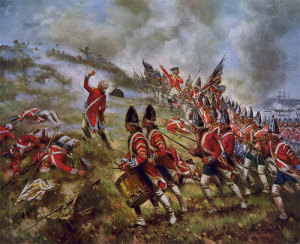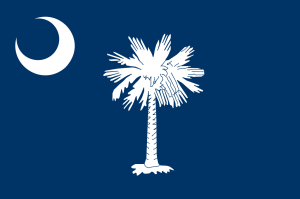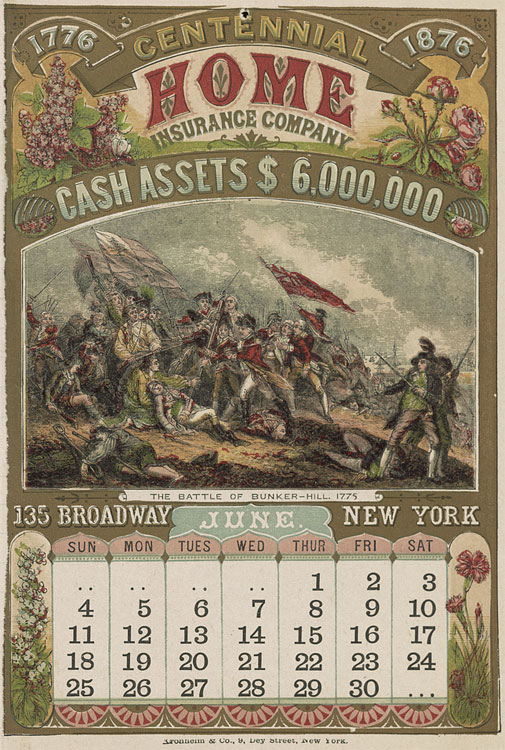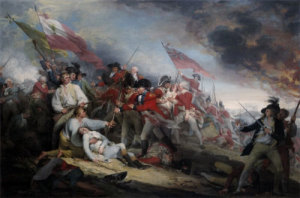Waving Bunker Hill flag – if there was one

June 14 is Flag Day and June 17 marks the 240th anniversary of the Battle of Bunker Hill in 1775, one of America’s early steps toward independence from Great Britain. So this is an appropriate time to link the two.
Or maybe not. Some scholars think that the American forces had no flag to wave on that day in Massachusetts. But that hasn’t restrained artists from adding banners anyway. After all, flags always make for better images.

Also complicating the Bunker Hill flag question is that the most prominent American banner associated with the conflict comes in two different hues: red and blue.
 In 1875, when the Bay State marked the centennial of the fight, there were definitely flags on hand, including the Palmetto flag of South Carolina. As a gesture of unity ten years after the end of the Civil War, South Carolinians asked for and received permission to show their flag at the 100th anniversary.
In 1875, when the Bay State marked the centennial of the fight, there were definitely flags on hand, including the Palmetto flag of South Carolina. As a gesture of unity ten years after the end of the Civil War, South Carolinians asked for and received permission to show their flag at the 100th anniversary.

Other flags and decorations also waved, according to news reports from 1875. “Many of the private displays were very elaborate and elegant,” The Boston Journal reported. “The national colors of red, white and blue were so profusely exhibited…as to present to the eye pictures of rare beauty.”

As for public buildings, the Journal noted that the State House in Boston was “quite tastefully decorated” with “American and other national colors…while ‘glories’ of national flags” waved below. That centennial was a flag day for sure.
As for the putative Bunker Hill flag, the upper-left corner of the flag shows an unusual decoration: a pine tree, representative of those found throughout New England. The main part of the banner, however, is debated.
One skeptic has written that the flag “with the blue field was an error made by a person coloring flag charts….The flag…was correctly printed with heraldic hatching to indicate a red field, but it was colored blue by mistake.”

To make matters even more complicated, he said that “the North American Vexillological Association…concluded that the Americans probably didn’t carry any flag at Bunker Hill.”
Besides that, the Red Coats won the battle that day. Nevertheless, Americans celebrate the day because the upstart patriots held their own against the mightiest army in the world.
Whatever the historical facts of the flag are, Bunker Hill’s meaning and the importance of flags as rallying points are unquestioned.
